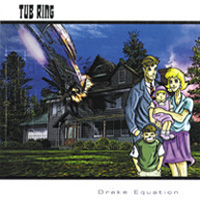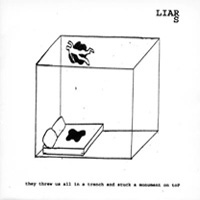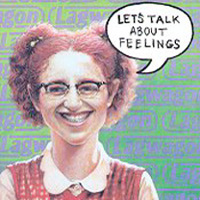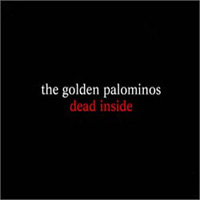 The Golden Palominos
The Golden Palominos
Dead Inside (Restless Records)
An interview with Anton Feir (Programming, Drums) and Nicole Blackman (voice)
by Lex Marburger
Far from their initial John Zorn and Arto Linsday noise fest eponymous album, and even farther from their pop oriented mid-’80s Michael Stipe phase, The Golden Palominos have struck a nerve into the morbid, disturbing musics of dark dub and ambient. Composed primarily of Programmer/ drummer/conceptualist Anton Feir (who was also one of the original Lounge Lizards, as well as a member of projects too numerous to mention) and Poet Nicole Blackman (who in addition to touring with Lollapalooza has done work with KMFDM), their new album, Dead Inside, has all the cynical creepiness of an Edward Gorey book. From the first person tale of a kidnapee/corpse of “Victim” to the heavily erotic/violent “The Ambitions Are,” Dead Inside is a landmark album of despair, agony, and transition.
The Palomino’s albums have ranged from a No-Wave extention to Michael Stipe, and now into dark elecrto dub. Is this a planned progression?
A: Not really. It’s very instinctive. I do something until it becomes repetitious, or it just doesn’t work for me on some level. I’ve never been interested in analyzing myself. I don’t think it would be necessary, or accurate. It would be a tainted, one-sided analysis. The Golden Palominos is a very self-indulgent project (and I mean that in the best sense of the word). It’s a vehicle that allows me to learn about areas of music that I’m interested in. My interests have always been wide reaching. The records are also collaborations so they’re also experiments in combining different people’s energy and seeing what results from that.
Nicole, how did you meet Anton?
N: Anton heard a recording I did on a compilation called Myths – Dreams of the World, and so last April, before I went on the KMFDM tour, we met, and by the time I came back, he had two tracks for me to write words to. So I was taking the train in from RI, to go straight into the studio, and I didn’t have my homework done! I wrote “Belfast” on the train, so there’s a sort of “train rhythm” in its diction. When I went into the studio, I asked him what he expected of me, and he said, “I don’t know what to expect from you.”
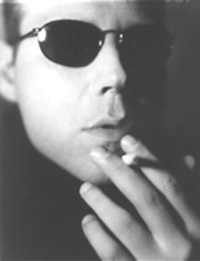 Anton, on your import album Dreamspeed (Avant), Japanese vocalist Phew had a mode of delivery that’s very similar to Nicole’s on Dead Inside, not to mention the music between the two albums was more similar than previous Palomino albums.
Anton, on your import album Dreamspeed (Avant), Japanese vocalist Phew had a mode of delivery that’s very similar to Nicole’s on Dead Inside, not to mention the music between the two albums was more similar than previous Palomino albums.
A: That’s a record that, to me, was very creatively successful. Before I made Dead Inside, I thought that was the best record I ever made. I’ve been more interested in spoken word than in sung vocals.
Does that come from being a drummer, identifying with vocal rhythms rather than melody?
A: No, to me it’s wanting to strip things to an essential nature. I want every sound on the record to mean something, I want every word to mean something. I don’t want the words to fit a melody, to be subservient to anything. I want all the meaning of the vocal element to come from the power of the words and the sound of the voice. Nicole’s not a singer. That to me was very appealing because she’s not going to bring any of those clichés to the process. I also didn’t want my collaborative partner to impose a musical personality on it. I wanted the musical end to be 100% mine. I wanted to deal with the voice as sound and lyric, not as melody or form or song structure. I always feel boxed in by song structure, no matter how far I try to push it. Working with Nicole best afforded the possibility of making the record I wanted to make.
Nicole, when you were writing, did Anton give you any prompts?
N: No. The only piece that I had a problem with was “Curses,” ’cause I was writing that last fall in a white heat, 10-12 pages a night, and I was worried that the pieces would start intruding on each other, but Anton was urging me to go deeper, darker, to get to the core of where it was coming from. That’s frightening because you never know if or when you’re going to hit bottom. I asked him to give me a cue, a word, to avoid repeating myself, and he thought a moment, looked a me and said, “Okay… Blood.” And the piece turned from something about sharks to a story about a mother who decides that when she dies in childbirth, she’s going to take the baby with her. It’s a pretty dark album. There’s some tracks where I still don’t know where they came from.
Did you set out to explore the dark side of ourselves?
A: In our first conversation about working together, Nicole asked what kind of record I wanted to make. I said I wanted to make the darkest possible record. For what reason? Obviously it says something about my consciousness. I wanted to limit it to that one area, and explore it from as many sides as possible. I didn’t want the record to be too wide ranging, to be microscopic about the details in this one area. Why I was attracted to the dark… There were times Nicole would ask me if it was getting too dark, and I would say, “There’s no such thing.” Like starting Dead Inside out with “The Victim.” Why build into it, why not just say, “This is what it’s about. If you don’t want to go any further, stop now.” To me, the text is so powerful. I was attracted to it, and why? Power. People say it’s dark and disturbing, but I like to be disturbed. I feel comfortable with what people call disturbing film and literature. I feel at home there.
N: But “Thirst” is a very tender track, and “Drown” is also a tender and erotic track. People tend to focus on the loss of hope and brutality of this record, but there’re also elements of sarcasm and humor in something like “Ride.” There’re many levels to the music, which keeps it interesting. There’re highs and lows, which makes people have to go back and listen to it again. My mother said the last half was so hypnotic that she wasn’t listening to the words, just the rhythm patterns, so she had to go back to hear what I was saying, and I thought, “Great!” The fact that NPR and college radio are playing the album gives me hope for the industry. It seems people are finally getting tired of luv songs about beer and their cars. When you see us on The Tonight Show, then you’ll know the world has changed, the inmates have taken over the asylum. I didn’t want Dead Inside to be simply lumped into, “Well, it’s folky,” “Well, it’s ambient,” “Well, it’s industrial.” I wanted people to say, “This is… weird.” And that’s what we got. The response I get from guys and girls is very different. Girls say, “Oh, this makes me want to write,” and they send me poems. This one girl is sending me cookies. Guys just want to know if I’m dating anybody. (She is.) The girls see some broken anger, and the guys think, “Yeah, she must be good in bed.”
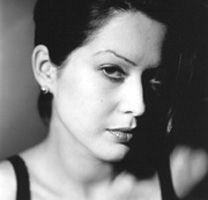 Well, after “Victim,” the first line on “Belfast” is “You lick her diamond and kiss her Pearl.” Which could have an allusion…
Well, after “Victim,” the first line on “Belfast” is “You lick her diamond and kiss her Pearl.” Which could have an allusion…
N: (coyly) What do you get out of that?
Cough, splutter, stammer…
N: There isa lot of erotic tension, but I don’t know how much of that is from me, or from the environment itself, because this is a very New York record. It’s as much as a portrait of the city as any of the people inside it. People will come up to me and be like, “Are you OK? Do you need to talk to someone?” I’m fine, probably because I can get it out of me and into the music. It surprises me that more people don’t think about this stuff. All the women on this record are in transition, at a point of departure of some kind. I can’t hear me in it anymore, I just hear them (the characters). That’s good. I’m glad I got that.
I also noticed the use of Jungle on the Album.
A: It’s minimal, there’re two pieces that have elements of it, but it’s not really jungle. I think jungle has been the biggest musical breakthrough that’s happened in the past 5 years. It’s really moved the computer into the realm of a musical instrument. It is no longer the sound of a sequencer playing, it’s the sound of human manipulation. This will affect how music is made for the next generation. I don’t feel that a computer is “less organic” than a guitar, or drum kit, or piano. All of these are mechanical inventions, none of them organically appeared. It’s the human being that is the organic element.
What’s your process when you write songs?
A: It’s an improvisational approach to organizing sound. It can start with an idea like a sound, a rhythm, a vocal line. That implies the next two steps. It grows exponentially. I’m not interested in coming up with things that I already know about, rather, through process, creating something that I could not have planned out beforehand. It’s an experiment in process, in energy. I try to leave as much room as possible for things to actualize themselves. I don’t want to limit anything to only what I know today, because that will preclude learning anything. The magic is in the infinite possibility that exists in every moment. Boy, does that sound pretentious.
Nicole, you have a line, “You’re 38 and your job is telling 14-year-olds what’s cool.” Since you do PR, is this autobiographical in any way?
N: I was actually thinking more about the Internet guys. In NYC, there’re all these businessmen who say, “Oh yeah, kids just love this new Michael Bolton CD Rom product!” I just want to grab them by the lapels and stupid pony tail and ask, “Who the fuck are ‘the kids’? Do you have any idea what the last five CDs your kids bought were? You don’t have a damn clue!” A lot of industry people have picked up on that line, and it’s making them sweat. I’ll be talking to someone in the middle of the night, and I’ll hear the lines floating around. It’s like seeing dust. That’s the way I hear things. It’s always been like that. I didn’t realize until a few years ago that wasn’t normal. But I also have a mild case of synthesesia, where I hear colors.
What’s the general color of Dead Inside?
N: Soft, black mud.

